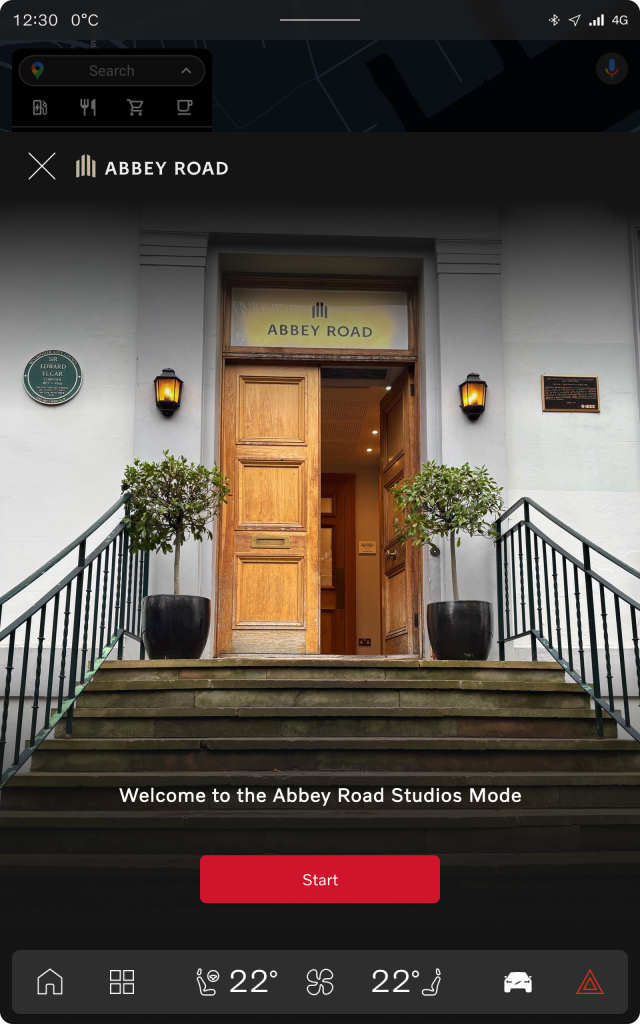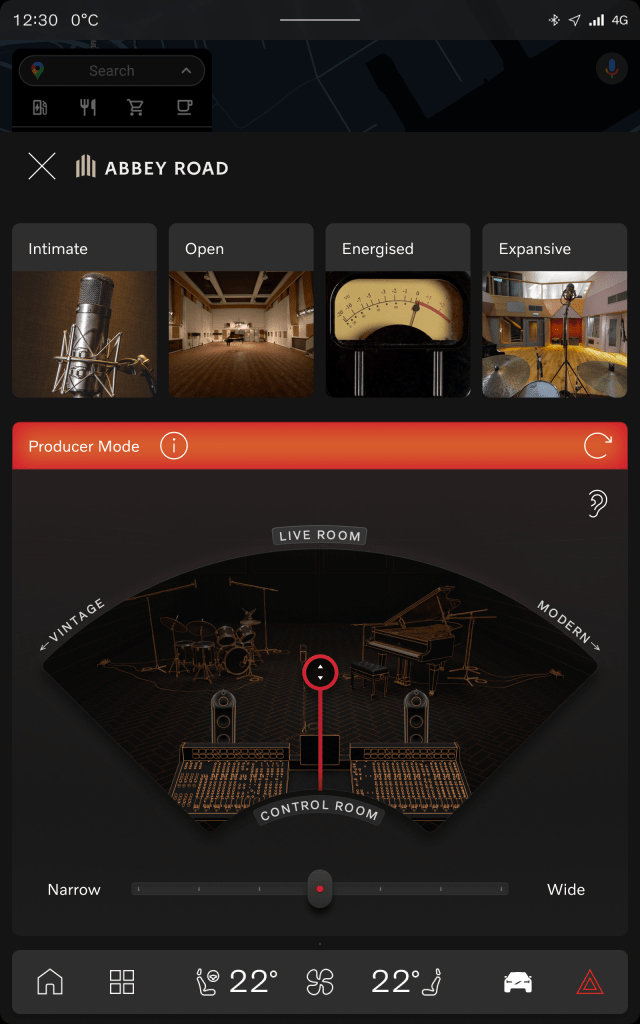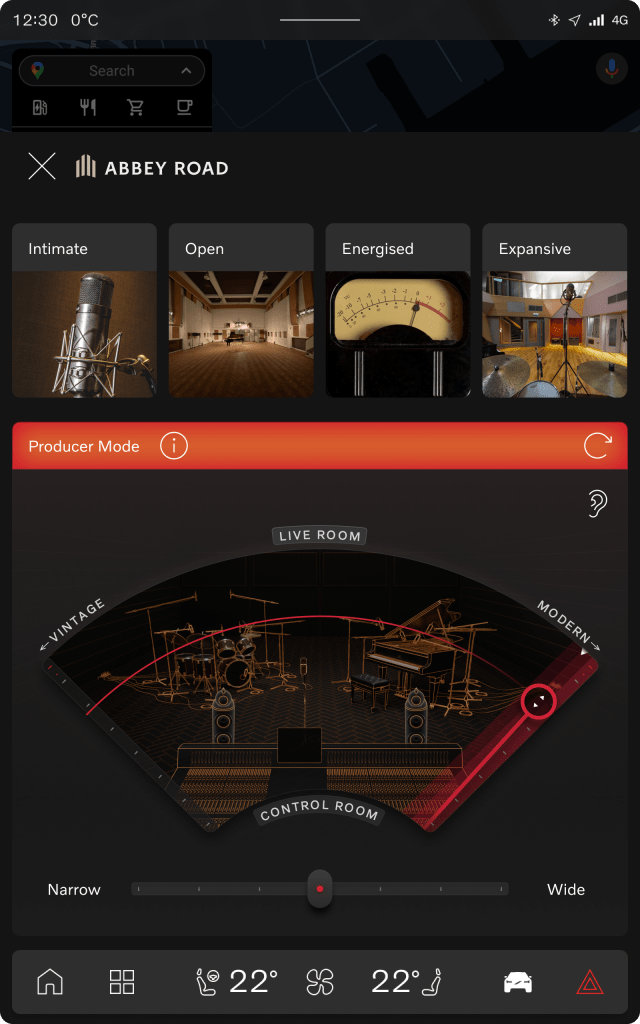How Volvo and Bowers & Wilkins bottled the Abbey Road sound and poured it into the EX90
The remarkable process that squeezed a hallowed recording studio's unique sound into Volvo's latest posh electric SUV
Within the walls of Abbey Road Studios in West London is an unassuming metal box called the Spreader. It’s a relatively crudely-constructed cube, a little taller than a toaster, with ventilation holes drilled in the top, and a red light and a couple of dials on the front. It’s the sort of scrappy-looking electrical device that could easily be overlooked but here at Abbey Road it is looked after with the greatest reverence, as it’s a key part of the esteemed studio’s history and what makes its unique sound.
It is one of three devices — along with something called a Compander and another known simply as the EMI EQ — built decades ago by Abbey Road’s EMI engineers, that became key tools used in manipulating music to create the studio’s distinctive audio flavour.
And now, those same devices have been employed by Bowers & Wilkins to create a bespoke Abbey Road Studios mode for Volvo’s new, pure electric EX90. The idea is to give your in-car music the same sort of sonic hue that you’d experience if listening to it in a control room at Abbey Road itself.

Opened in 1931 by the Gramophone Company, which later became EMI, Abbey Road Studios was the world’s first dedicated recording studio. For audiophiles, the place has become hallowed ground. Within its walls — just in Studio 2 (pictured below), in fact — The Beatles recorded 190 of their 211 songs, including, of course, the album titled “Abbey Road”. Pink Floyd recorded Dark Side of the Moon here, too, and under the same roof Kate Bush put down her albums Never for Ever and The Sensual World. U2, Green Day, Shirley Bassey, Elton John, Oasis, Radiohead and Amy Winehouse all visited the building to record.
In the words of Jeremy Huffelmann, Abbey Road Studio’s managing director, “This is where artists come to make music that echoes around the world.”

Part of the reason so many legends go to Abbey Road to record their songs has been the bleeding edge technology developed by its Record Engineering Development Department (REDD). Being a pioneer in audio recording meant the studio had to build its own equipment and ways of manipulating sound. Clever folks at Abbey Road developed much of its own hardware from scratch, from microphones to mixing consoles. By using this bespoke kit, a unique and identifiable sonic profile developed.
“The Abbey Road sound is a combination of elements,” according to producer and Abbey Road sound engineer Marta Di Nozzi. “The rooms have a specific sound, and it’s definitely also our history and heritage regarding equipment. That’s a big part. We have equipment that belongs from the 1930s to yesterday, so we are able to reproduce some sounds or create new ones using new equipment and old equipment, and things that you would not find anywhere else.

“There is also a part of history and experience that gets through generations with the engineers here. So I’m just a tiny bit at the end. But there’s been a lot of generations before me that have been involved in creating our sound.”
But while this unique audio character is apparent within the Abbey Road Control rooms, once it leaves the building and is played on equipment elsewhere it can lose some of the sparkle. That led Huffelmann to wonder if it would be possible to create a product that faithfully reproduced the unique listening experience of Abbey Road outside the studio.
“We’re incredibly privileged to enjoy our sound very regularly but we’re also aware that not everybody gets the chance to do that,” he said. “And that is what triggered us to ask the question, could we take the essence of that experience out of the control room, take it out of the building and take it out into the wider world?
“We asked ourselves how do we do that? Do we make a speaker? Could that be a headphone? And then eventually, could we put that in a car. That would be pretty cool.
“And so began a multi-year journey of defining what the Abbey Road sonic DNA was, and asking how and if we could transpose that out of the building and into the cabin of the car.
“That is not easy. In fact it would have been easier to make some headphones, to be fair. But it was worth it.”
One of the primary goals for engineers like Di Nozzi has always been to get what is called “true sound” — a perfect reproduction of the live music — within the soundproofed control rooms, so that the producers and engineers can hear it without any kind of distortion. Without wishing to blow smoke into Bowers & Wilkins’ speaker vents, it says something that Abbey Road has used the British company’s products for reference quality playback since the 1980s, when it was working on the audio mix for Indiana Jones and the Raiders of the Lost Ark. (Since then, many movie soundtracks have been mixed there, including many of the Bond and Marvel films.)
But once the true sound is achieved, additional fairy dust can be sprinkled on it by the engineers … and that’s where Abbey Road’s unique boxes of tricks come in.

The Spreader is a simple device that can make a music track appear to fill a room, or narrow its focus as if you’re in a tight space. The EMI EQ adds richness to the bass. The Compander, meanwhile, was originally designed to reduce tape hiss on classical recordings, but pop music engineers had other ideas.
“It was a noise reduction system patented by EMI in the early Sixties, a good few years before Ray Dolby patented Dolby,” explained Mirek Stiles, Abbey Road’s head of audio products. “And typical of Abbey Road engineers at the time, they used it in ways it wasn’t designed to be used.
“They discovered that if you just used the encode section and not the decode section, you kind of got this lovely high-end shimmery effect. It added these kind of harmonics, and they were very pleasing to the ear.”
Stiles — working with Bowers & Wilkins’ automotive development engineer Dominic Bowers (no relation to the company’s co-founder John Bowers, he says, meaning his employment at the company is a beautiful piece of nominative determinism) — decided that the Compander, Spreader and EMI EQ, would be crucial in transferring the Abbey Road Studios sound into Volvo cars.

“This equipment was made for Abbey Road; it was never available commercially anywhere else,” Stiles said. “Over the years it became a thing of legend because it was used in some very famous recordings, and people couldn’t get hold of it for love nor money. So this kind of halo effect, if you like, came off the back of this gear. And it has got a certain sound to it — a very special, unique sound.”
Stiles and Bowers determined that combining the Compander, Spreader and EMI EQ, and a great deal of development time between 2021 and 2024 at the studios themselves, could result in a good approximation of the audio quality could be canned for use in cars.
“Most people don’t get the opportunity to come to Abbey Road and experience the studios first hand,” said Bowers. “During the [Covid-19] pandemic, we came here and managed to capture over 60 measurements. Basically, the process involves using Bowers & Wilkins speakers and microphones in the different spaces, filling the room with acoustic energy and capturing that energy with the microphones. What you get is an impulse response and we use those impulse responses to map different spaces.”

Bowers used that data on the size and shape of the studios, how the sound reflects off of the different surfaces and more, and ported it into Volvo cars. When this process began, the seven-seat, pure-electric EX90 was still on the drawing board and so the early tests involved fitting speakers within the smaller EX40 — not ideal, but a good way to get the ball rolling.
“It was a bespoke tuning for each of those environments [EX90 and EX40],” said Bowers. “So it was quite challenging, but we got there.”
“For me personally, the car is interesting from a sound point of view,” added Stiles. “In many ways, it’s like the perfect blank canvas because it’s a known entity. You know where everyone’s going to be seated [but] on the other hand, it can be quite a claustrophobic environment, acoustically. You can be sitting very close to the speakers, and there are many speakers around you.”

Over a series of tests the team learnt what worked and what didn’t, including where to position the speakers within the EX90’s cabin for maximum fidelity. They also fine-tuned the settings of the Abbey Road mode, allowing users to slide between what they labelled “Vintage” and “Modern” audio profiles.
It’s also possible to make the music more intimate, as if the microphones are up close to the main stage or out towards the back of the studio space, which gives more weight to the effect of the recording studio’s shape itself. Using the touchscreen, you can even slide the microphone around the studio, picking up more piano or more drums, and play with a virtual Spreader, making the sound wider or narrower as if moving the speakers.
“If you think of how we captured the data to develop the app, we’re actually using reverb content from different spaces in Abbey Road as well,” said Bowers. “So it’s not like we’re taking it from any other spaces; it’s mapped to the sonic fingerprint of this building.”
It has to be said that the user interface is a work of art in itself: super intuitive and easy to adjust without taking your eyes off the road for more than a split second, particularly if selecting one of four pre-set options. It’s a piece of software of which someone like Apple’s legendarily fastidious former boss Steve Jobs would have been proud.
But do Stiles and Bowers honestly recognise it as “Abbey Road” when they switch it on in the car? “Definitely,” Stiles replies without hesitation. “Some of this gear over the years was like the secret weapon of the engineers. It’s got a certain sound to it, and that is the sound — the DNA — that we’ve employed into this car. To me, it sounds like a recognisable piece of our DNA.”
Sign-off came from Stiles himself at Abbey Road, then the Bowers & Wilkins team, as well as — obviously — Volvo.
“It took months, maybe years [to ensure all parties were happy with the results],” according to Bowers. “Not continuously, but we have been working on this project for a few years. “We took the measurements in 2021, so to see it all come together now is really special.”
Related articles
- If you enjoyed this feature about Volvo’s Abbey Road Studios mode for its Bowers & Wilkins sound system, you might also be interested in composer Hans Zimmer talking about creating the soundscape for BMW’s electric cars
- Also check out our Volvo EX90 review
- The EX90 still has a petrol-based sibling, the Volvo XC90: here’s our review of the new T8 model
Latest articles
- Aston Martin takes DBX super-SUV to new heights with 717bhp variant
- Hot topic: 13 things drivers should not leave in a car in warm weather
- Skoda creates digital showroom on Amazon in European first
- Porsche 911 Carrera S 2025 review: Harder, better and faster – but is it the best 911?
- F1 2025 calendar and race reports: The new Formula One season as it happens
- Seven great automotive events to visit this summer, from F1 to art and champagne
- Watch new Porsche 911 GT3 smash Nürburgring record for manual cars
- Skoda Elroq 2025 review: Czech carmaker can’t seem to miss with its electric family cars
- Five best electric cars to buy in 2025


























